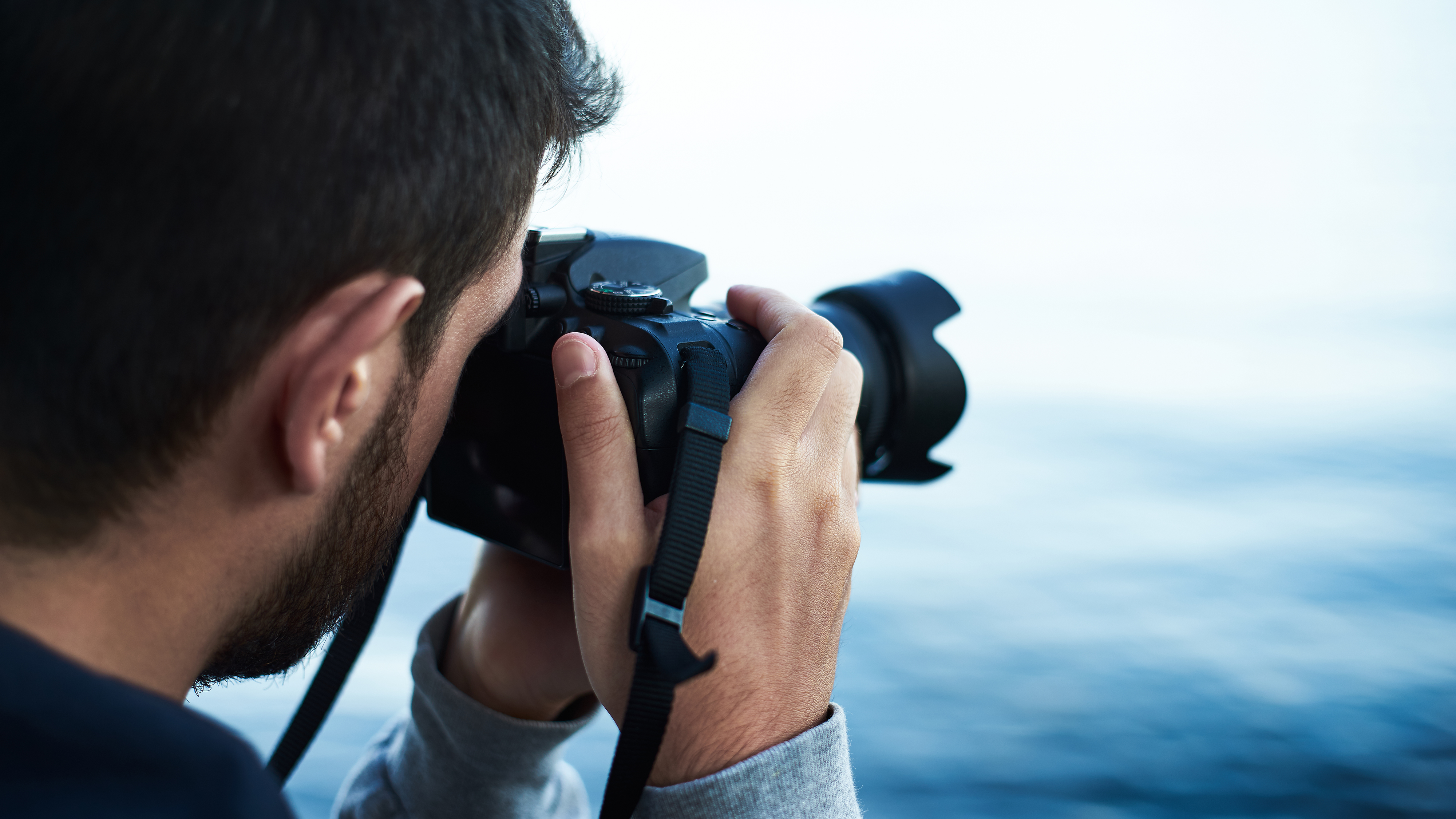

Digital Single Lens Reflex cameras – DSLRs for short – have been around for 20+ years, their lineage traceable back through the film-based SLRs of old. So it’s about time we examined what one actually is, what it does – and why high-end amateurs and pro photographers swear by them.
One advantage to point out upfront is that the lens screwed to the front of any DSLR can be removed and replaced at will. Certain lenses suit certain subjects better in terms of their light-gathering properties, or the effect they lend to the subject – throwing the background out-of-focus when taking someone’s portrait for example, to avoid distracting peripheral clutter and direct the viewer’s eye instead. Alternatively, a wide-angle lens that keeps most of an expansive subject sharply within the frame will be a better bet for landscape photographers and so on.
There is also a massive amount of further creative accessories available for shooting with DSLRs, including flashguns, filters and softboxes, which can all have a bearing on the end image. As a result, the best DSLRs have always been thought of as the best bet for the hobbyist photographer or professional who wants to stay creatively flexible.
How do DSLR cameras work?
A digital SLR, or DSLR, is essentially the marriage of a digital imaging sensor to the optics and mechanisms of a decades-old traditional 25mm film SLR. Here the sensor replaces what was previously a roll of film, yet, similarly, it is the ingredient onto which the light is trained via to help form an image.
Initially, companies cannibalized the existing design and control layout of film SLRs to avoid having to build a digital camera system from scratch. Ten to 15 years later, however, they did build a purely digital system from the ground floor up with the introduction of mirrorless system cameras, which, along with the smartphone, have proved the biggest existential threat to DSLRs; more on which later.
Essentially, the mechanisms of a digital SLR work in a similar way to that of film SLRs, in that a mirror located inside the body reflects the light entering the lens up to the optical viewfinder. This allows the photographer to get a clear view of what’s being seen through the lens – and so an accurate picture of what they’ll actually capture when they squeeze the shutter release button and fire off a shot. On a DSLR, when the shutter release button is pressed this internal mirror mechanism flips out of the way to allow the light from the lens a straight path to the imaging sensor sitting directly behind it.
When weighing up which digital SLR to buy it’s always worth considering not only the resolution of the sensor provided – most people will recognize that as a number of pixels, with the higher the number the ‘better’ the resolution – but also the sensor’s physical dimensions too. Whereas most consumer DSLRs offer APS-C sized sensors, meaning they are larger than those found in compact cameras, smartphones and also a number of mirrorless competitors – more enthusiast/professional (and thus higher priced models) offer what’s termed ‘full-frame sensors’. Namely, these are the same size as a frame of film of old, and are generally considered the best option for any DSLR user serious about their photography.
Get all the latest news, reviews, deals and buying guides on gorgeous tech, home and active products from the T3 experts
We can’t change the size of our DSLR’s sensor like we used to be able to swap out a roll of film, however, so the decision needs to be made at the point of purchase as to whether a physically larger, typically higher pixel count, the full-frame sensor needs to be purchased at a premium, or whether a regular and less pricey APS-C sensor is acceptable.
It’s also worth noting that full-frame and APS-C DSLRs will typically deploy differing lens mounts – or there will be a crop factor when one lens is used on another camera’s body, as with Nikon’s own DSLR system – so that’s another important reason to make the choice that’s best for you upfront. Typically, any conundrum is simply solved by asking yourself: ‘do I actually need ‘x’ amount of pixels?’ While full-frame DSLRs are loved by professionals, not all of us are going to need to make poster-sized prints, or want to maintain a degree of sharpness bordering on the forensic.
Ultimately we’ll want to choose a DSLR if access to a very wide range of creative accessories and lenses, all helping us to theoretically achieve pro-comparable results, is really want we're after. For everything else, we’ve listed the alternatives below.
Alternatives to a DSLR
If you’re wanting a camera upon which the lens in use can still be swapped to best suit a range of subject matter, then the closest alternatives to DSLRs are currently mirrorless compacts – which are typically smaller yet provide similar performance to their chunkier brethren – along with medium format cameras, which are typically larger, more powerful and thus more expensive than DSLRs. The latter, with their larger sensors, are what professionals would automatically have once used to shoot an image that needed to be enlarged to billboard size. That said, DSLRs offering resolutions of 40 megapixels upwards have, in recent years encroached on their once rarified territory; and for a smaller, albeit still eye-watering, expense. Today we’d be paying around £5K for a resolution on a DSLR that would once have cost us around £20K to access via a medium format camera.
Of course, one obvious alternative to all of the above is simply to whip out our smartphone when we see an image worth capturing. The old adage that advises that your ‘best’ camera is the one that you have with you at the time, rings true. Nine times out of ten the quality of your phone’s probably going to be ‘good enough,' if winning awards isn’t the prime objective. Though awards have indeed been won with mobile phone snap; and nothing wrong with that. But if you want to get physically to grips with the mechanics and optics of photography, and witness the direct correlations your exertions have on the images created, then a DSLR is hard to beat.
Liked this?

Gavin Stoker has been writing about photography and technology for the past 20 years. He currently edits the trade magazine British Photographic Industry News - BPI News for short - which is a member of TIPA, the international Technical Imaging Press Association.